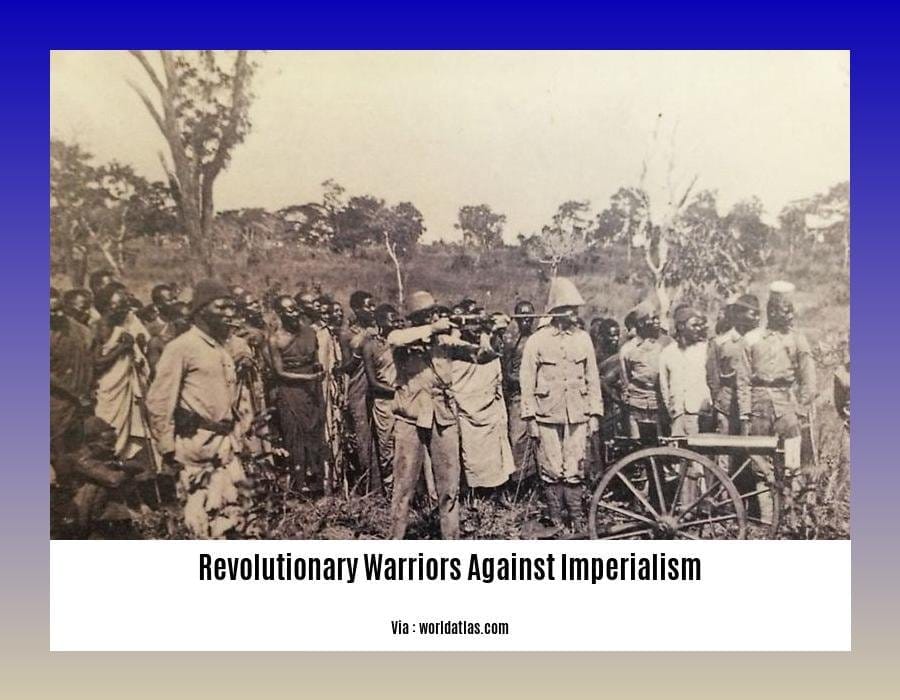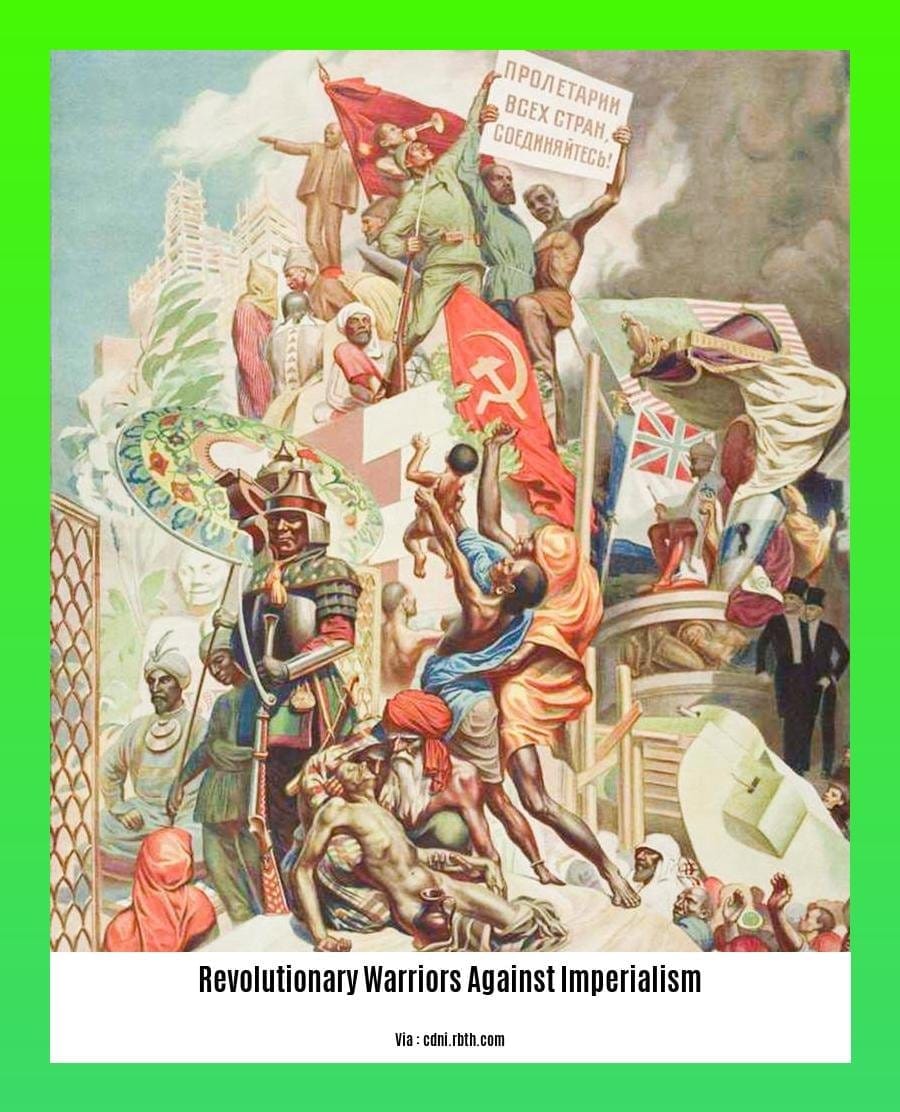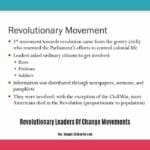Unveiling the Indomitable Spirit of Revolutionary Warriors Against Imperialism: In this exploration, we’ll unearth the hidden narratives of courageous individuals who rose up in defiance against the oppressive yoke of imperialism. These unsung heroes embody the indomitable spirit that fueled their unwavering fight for liberation and justice.
Key Takeaways:

- Nonviolent resistance can be a powerful tool for achieving independence and social change, as demonstrated by Mohandas K. Gandhi.
- Assassination remains a weapon of suppression against revolutionary leaders, as seen in the deaths of Patrice Lumumba and Eduardo Mondelane.
- Anti-corruption and anti-imperialist policies can empower nations and improve the lives of citizens, as shown by Thomas Sankara.
- Leadership and dedication can guide countries to independence, as exemplified by Agostino Neto in Angola.
Revolutionary Warriors Against Imperialism
In an era marred by colonial rule and subjugation, revolutionary warriors against imperialism emerged as beacons of hope, challenging the oppressive grip of foreign powers and inspiring movements for self-determination.
These intrepid warriors, armed with unwavering resolve and a vision of a just and equitable world, fought against overwhelming odds, sacrificing their lives to break the chains of imperialism and awaken the spirit of freedom in their people.
Throughout history, from the shores of Africa to the valleys of Asia, countless revolutionary warriors against imperialism have left an enduring legacy. They exemplified courage, resilience, and an unyielding belief in the power of liberation.
Mohandas Gandhi, a towering figure in the Indian independence movement, led a non-violent resistance campaign that ultimately freed India from British rule. Patrice Lumumba, the first Prime Minister of the Democratic Republic of the Congo, fought tirelessly against colonialism, only to be assassinated by Belgian forces.
Eduardo Mondelane, the founding President of the Mozambique Liberation Front, dedicated his life to liberating his country from Portuguese colonial rule, while Thomas Sankara, the President of Burkina Faso, became a symbol of anti-imperialist resistance, striving to create a just and prosperous nation.
These revolutionary warriors against imperialism faced immense risks and challenges. They were imprisoned, tortured, and even killed, yet their spirit remained unbroken. Their sacrifices served as a catalyst for change, inspiring generations to come and shaping the course of history.
As we reflect on their legacy, it is crucial to recognize the indomitable spirit that drove these warriors to fight against injustice and oppression. Their unwavering determination to free their nations and empower their people stands as a testament to the human spirit’s resilience and serves as a reminder that the struggle for justice and freedom remains an ongoing one.
To understand the struggles, sacrifices, and triumphs of the heroic revolutionaries who defied colonial powers, it is essential to delve into the lives of these extraordinary individuals. These brave men and women, hailing from diverse backgrounds, united in their unwavering determination to challenge the oppressive systems that sought to suppress their people. By clicking on the link, you will embark on a captivating journey to discover the indomitable spirits of the anti-colonial revolutionary leaders and figures who fought tirelessly for freedom and justice. Explore their remarkable stories and gain insights into the strategies and ideologies that fueled their movements. The lives of these courageous revolutionaries who challenged colonial rule are a testament to the power of human resilience and the indomitable spirit that can overcome even the most formidable of challenges.
Strategies and Tactics of Revolutionary Warfare
Imagine a battle where the odds are stacked against you, yet you rise with courage and determination. That’s the essence of revolutionary warfare, where oppressed people fight for freedom against formidable empires.
Throughout history, revolutionaries have employed cunning strategies and tactics to overcome overwhelming might. Let’s dive into some of the most notable ones:
Guerrilla Warfare
Think of guerrillas as the nimble cats of warfare. They strike from the shadows, using surprise attacks and mobility to harass and exhaust their enemies. This tactic proved effective for the Vietnamese against the French and Americans.
Espionage
Knowledge is power, and revolutionaries know it. They use spies to infiltrate enemy ranks, gather intelligence, and sabotage operations. The American Revolution’s success owes much to espionage efforts by Nathan Hale and others.
Sabotage
Messing with the enemy’s infrastructure is a favorite revolutionary tactic. By damaging railroads, bridges, or communication lines, revolutionaries disrupt enemy operations and create chaos.
Propaganda
Winning the hearts and minds of the people is crucial for revolutionaries. They use propaganda to spread their message, mobilize support, and demoralize the enemy.
Asymmetric Warfare
Revolutionary warfare often involves a clash between a small, poorly equipped force and a larger, better-armed enemy. To overcome this imbalance, revolutionaries employ asymmetric tactics, such as hit-and-run attacks or using improvised weapons.
Key Takeaways:
- Guerrilla warfare, espionage, sabotage, propaganda, and asymmetric tactics are common revolutionary strategies.
- These tactics aim to overcome the odds by harassing, disrupting, and demoralizing the enemy.
- Revolutionary warfare has had a lasting impact on modern conflicts, inspiring insurgents and influencing military doctrines.
Source:
The Legacy of Revolutionary Warriors
For centuries, brave individuals have risen against the shackles of imperialism, fighting relentlessly to break free from colonial oppression. Their stories are not mere historical relics but testaments to the indomitable human spirit.
Gabriela Silang: A Trailblazer in Philippine History
Gabriela Silang, the iconic Philippine revolutionary, epitomized the courage and determination of those who fought against imperial rule. As the wife of a prominent leader in the Ilocos region, she took up arms after her husband’s execution by Spanish colonists.
Silang led her followers in guerrilla warfare, employing tactics that confounded the Spanish Army. Her bravery inspired countless others to join the fight for independence. Ultimately, she was betrayed and executed, but her legacy as a fearless warrior and a symbol of resistance remains undiminished.
Key Takeaways:
- Revolutionary Warriors Embodied Resilience: They persevered in the face of overwhelming odds, demonstrating the strength of the human will.
- Women Played Crucial Roles: Female warriors like Gabriela Silang played pivotal roles in the fight against imperialism, shattering gender stereotypes.
- Their Legacy Inspires: The indomitable spirit of revolutionary warriors continues to inspire movements for liberation and justice around the world.
Citation:
- HerStry: Amplify the Revolutionary WarriHers
Lessons for Contemporary Struggles
Imperialism may take on new faces, but the fight against it continues to echo with the indomitable spirit of revolutionary warriors. Their battles, sacrifices, and unwavering resilience provide timeless lessons for contemporary struggles against oppression and inequality.
Key Takeaways:
- Embrace the Power of Resistance: Like those who fought against imperialism, resistance remains a potent force against oppressive systems.
- Reclaim History and Identity: Understanding the legacies of imperialism helps us reclaim our narratives and empowers us to shape our present.
- Unite and Build Solidarity: Revolutionary warriors forged alliances across borders. Unity and solidarity are essential for overcoming contemporary challenges.
- Learn from the Past to Guide the Future: The failures and triumphs of historical struggles offer valuable insights for navigating today’s complexities.
- Inspire Hope and ignite Change: The indomitable spirit of past warriors ignites hope and drives us to strive for a more just and equitable world.
Examples of Revolutionary Tactics for Contemporary Struggles:
- Guerrilla Tactics: Non-violent disobedience, grassroots organizing, and decentralized resistance can challenge oppressive systems.
- Cyber Activism: Digital platforms provide new avenues for mobilizing support, exposing injustices, and disrupting power dynamics.
- Cultural Resistance: Preserving and reclaiming cultural traditions can counter dominant narratives and empower marginalized communities.
Challenges and Opportunities:
Today’s struggles against contemporary imperialism face unique challenges, including:
- Globalized interconnectedness: Imperialism has evolved into complex power structures spanning borders and industries.
- Technological surveillance: Digital technologies can be used to suppress dissent and monitor resistance movements.
- Economic disparities: The widening gap between the Global North and South perpetuates inequalities and exploitation.
However, these challenges also present opportunities for innovative and multi-faceted resistance.
Conclusion:
The lessons from revolutionary warriors against imperialism are invaluable tools in the ongoing fight for justice and freedom. By embracing their indomitable spirit, uniting our voices, and leveraging our collective power, we can overcome contemporary challenges and shape a more equitable and sustainable future.

FAQ
Q1: Who were some of the most notable revolutionary warriors against imperialism?
A1: Some of the most notable revolutionary warriors against imperialism include Mohandas K. Gandhi, Patrice Lumumba, Eduardo Mondelane, Thomas Sankara, and Agostino Neto. These individuals led movements that fought for independence and self-determination against colonial powers.
Q2: What tactics did revolutionary warriors use to fight against imperialism?
A2: Revolutionary warriors employed various tactics to fight against imperialism, including guerrilla warfare, espionage, and naval warfare. Guerrilla warfare involved using small, mobile units to launch surprise attacks on enemy forces. Espionage was used to gather intelligence about enemy movements and plans. Naval warfare was used to disrupt enemy supply lines and communication.
Q3: What were the key factors that contributed to the success of revolutionary warriors against imperialism?
A3: The success of revolutionary warriors against imperialism was influenced by several factors, including the support of the local population, the use of effective tactics, and the ability to adapt to changing circumstances. Additionally, the decline of imperial powers and the rise of global movements for self-determination also played a significant role.
Q4: What is the legacy of revolutionary warriors against imperialism?
A4: The legacy of revolutionary warriors against imperialism continues to inspire and motivate movements for justice and freedom around the world. Their sacrifices and triumphs serve as a reminder of the indomitable spirit of those who dare to stand up to oppression and fight for a better future.
Q5: How can we learn from the experiences of revolutionary warriors against imperialism in today’s world?
A5: By studying the experiences of revolutionary warriors against imperialism, we can gain valuable insights into the strategies and tactics that can be used to challenge oppressive systems. Their stories teach us about the importance of perseverance, resilience, and the power of collective action.












